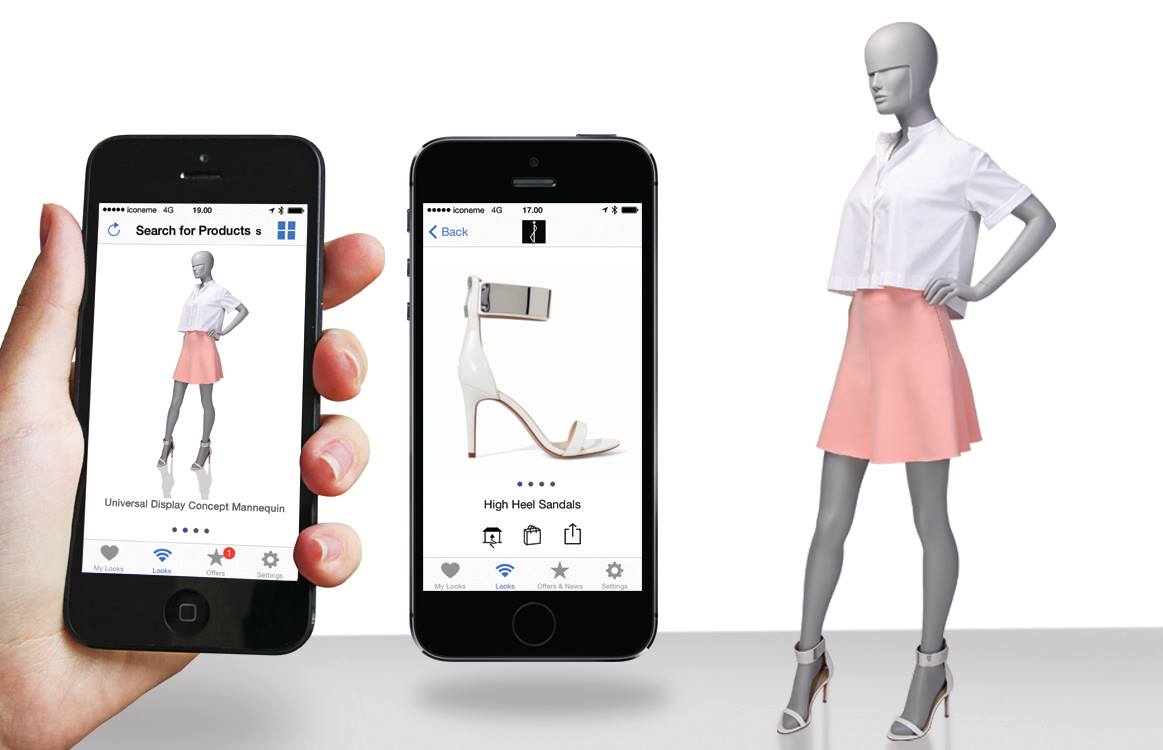Inside the high-tech retail store of the future
Part of our series on the future of small business in America


Retail stores are having an identity crisis. With foot traffic falling and customers flocking to online outlets like Amazon, many brick-and-mortar stores are looking for new ways to keep the physical shopping experience relevant. "Physical stores find themselves at a crossroads," says Doug Stephens, retail industry futurist and author of The Retail Revival. "The value they used to provide, to assemble in one place a selection of products easily shopped and taken home, that value isn't what it used to be 30 or 40 years ago."
If storefronts want to compete with their more convenient (and usually cheaper) online alternatives, they will have to offer unique and personalized experiences worth getting off the couch for. "My expectation will be to go to the store to learn about things, to be a participant in things, to try different products, to co-create, to customize, to personalize the things I'm buying," Stephens says. Here, a few predictions for how the retailers of tomorrow will keep us shopping.
You'll be transported by virtual reality
The Week
Escape your echo chamber. Get the facts behind the news, plus analysis from multiple perspectives.

Sign up for The Week's Free Newsletters
From our morning news briefing to a weekly Good News Newsletter, get the best of The Week delivered directly to your inbox.
From our morning news briefing to a weekly Good News Newsletter, get the best of The Week delivered directly to your inbox.
The stores of the future will "be far more immersive, tactile, and much more visual," says Stephens. "Technologies like virtual reality, which a lot of companies right now are sort of experimenting with, can be used to create immersive shopping experiences."
For instance, outdoor apparel maker The North Face recently collaborated with VR company Jaunt to let shoppers at its flagship stores don VR headsets and take a virtual tour of Yosemite National Park, or virtually rock climb alongside star athletes. "Every brand wants to forge an emotional connection with its customers," Eric Oliver, director of digital marketing at The North Face, told Digiday. "Our brand mission is to inspire a life of exploration, so we felt like this was a great way to enhance our storytelling, use technology, and transport people to the outdoors." After they've descended the cliffs, perhaps customers will feel more inclined to purchase some climbing gear.
Virtual reality could also replicate the in-store shopping experience entirely, as marketing agency SapientNitro and VR platform Sixense demonstrated with their collaboration vRetail. The platform transports users into a digital showroom with virtual clothes and shoes, which users can try on using a digital avatar.
The mannequins will talk to you
A free daily email with the biggest news stories of the day – and the best features from TheWeek.com
The motionless human-like models that most stores use to show off merchandise are about to get a little bit creepier. A startup called Iconeme added electrical implants to mannequins that can communicate with a nearby shopper's smartphone. A customer with the Iconeme app can learn more about the clothing the mannequin is sporting and even make purchases seamlessly through the app. Iconeme unveiled the technology last year at several stores in London, including a brand called Hawes & Curtis. "We want to develop a greater engagement with our customers," the company's brand manager, Edward Smith, said in a press release. "We can have instant feedback and instant sales as a result of our displays, even if the store is closed. It's a complete game-changer for the retail industry."
Stores will track and identify you
Remember that scene from Minority Report when Tom Cruise walks into a shopping mall and all the advertisements speak directly to him and know his shopping history by scanning his retinas? That's not so far off. A company called Hoxton Analytics offers a system that can determine a shopper's demographics. Instead of scanning your eyeballs, this technology works by scanning and identifying your shoes. The goal is to help companies better understand customers and traffic patterns. The company assures the system "does not gather personal data, it does not store individual photographs, nor can it recognize individuals."
Retailers are also employing "beacon" technology, which interacts with a shopper's smartphone to let him know about discounts and promotions he might like, or simply welcome him to the store, all the while keeping tabs on who is shopping and for how long. Already, more than 200 malls are using beacons in stores like Macy's. The technology "allow brands, marketers to wake up their app and deliver a relevant personalized message to you, as the app user," Mikael Thygesen, chief marketing officer for Simon Malls, told CNBC.
The fitting rooms will be intelligent
Luxury brand Rebecca Minkoff recently partnered with eBay to create "smart" fitting rooms complete with touch-screen mirrors, motion-sensors, and tracking abilities to monitor the items customers bring into the room but don't buy. "Ultimately we want to try to enable this technology to turn the store into your store," Ebay executive Steve Yankovich told Fast Company. The fitting rooms could send customers updates on items they showed interest in, or wanted in a different size or color. But the question is whether shoppers really want their fitting room to be watching them.
And the stores will automatically know your size
If you're not into the idea of smart fitting rooms, the good news is you may not even need to step foot in them. "Retailers are trying to solve the puzzle of fitting," Stephens says. "There are a lot of companies out there now trying to figure out some sort of algorithmic fitting pattern." One such company is Stantt, which scanned the bodies of 2,000 men and used the resulting data to come up with 75 different shirt sizes, all slightly different. The founders say 95 percent of men will find a shirt that fits them perfectly. The finished product feels like it was made for you by a professional tailor, but for a reasonable price of about $100.
Jessica Hullinger is a writer and former deputy editor of The Week Digital. Originally from the American Midwest, she completed a degree in journalism at Indiana University Bloomington before relocating to New York City, where she pursued a career in media. After joining The Week as an intern in 2010, she served as the title’s audience development manager, senior editor and deputy editor, as well as a regular guest on “The Week Unwrapped” podcast. Her writing has featured in other publications including Popular Science, Fast Company, Fortune, and Self magazine, and she loves covering science and climate-related issues.
-
 New START: the final US-Russia nuclear treaty about to expire
New START: the final US-Russia nuclear treaty about to expireThe Explainer The last agreement between Washington and Moscow expires within weeks
-
 What do the people of Greenland want for their future?
What do the people of Greenland want for their future?As Europe prevaricates over US threats for annexation there is a unifying feeling of self-determination among Greenlanders
-
 Time blindness: is being late a disorder?
Time blindness: is being late a disorder?In The Spotlight Understanding the cause of chronic tardiness can save a relationship
